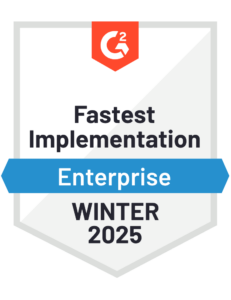Artificial Intelligence: Much Will Change. Core Finance and Accounting Responsibilities Will Not.
Blog post
Share
Bill Marchionni, Account-to-Report Advisory Global Program Leader, The Hackett Group
What is AI?
Much is being said and discussed about Artificial Intelligence (AI), so it is important to have a clear understanding of what AI is. AI includes:
- Computer systems that can perform tasks that typically require human intelligence
- A set of technologies that enable machines to perceive, reason and act in ways that simulate human intelligence
The goal of AI is to create intelligent machines that can work together, as well as interact with humans in a natural and intuitive manner to increase individual and organization capabilities and improve operational efficiency and value delivery.
ChatGPT is Garnering Attention and Headlines. But Generative AI is Only a Part of the Puzzle.
AI technologies include mature technologies and emerging technologies. Mature AI technologies are more quickly adopted. Adoption of emerging technologies is slower.
- Mature technologies: chatbots, machine learning, image recognition, voice recognition
- Emerging technologies: Generative AI, computer vision, sentiment analysis, deep learning, neural networks, cognitive computing
Most Finance organizations are in the early stages of AI implementation and investigation. According to a survey by The Hackett Group®, 45% of Finance organizations are in the initial planning and business case phases, and 46% are in the pilot and early implementation phases. Nine percent (9%) have implemented AI.
Expect Solution Providers to Embed AI, as Appropriate, in their Offerings.
To date, Finance leaders have been pragmatic in their thoughts and actions relative to AI. According to The Hackett Group®, Finance leaders believe:
- AI will initially provide business value as a series of point solutions and technologies that are matched with specific business requirements
- AI will appear in pockets where there are immediate opportunistic use cases
- AI will become part of the foundational technologies and business applications
- Standard embedded use cases will emerge over the next 3 – 5 years
Caution! Most Finance organizations lack an enterprise strategy for assessing and deploying AI uniformly across the enterprise.

Finance Adoption of AI is Slower Than Other Functions, with Good Reason.
Functions and processes that have been early adopters of AI include Contact Centers, Customer Service, Global Business Services, R&D, Sales, and Marketing. The Finance function has been slower than these to adopt AI. There are important reasons for this.
AI technology promises big and widespread business and organizational change. What will not change is Finance and Accounting’s responsibilities. Whatever the level of AI adoption, finance and accounting will remain responsible for:
- Safeguarding of assets (tangible, intangible)
- Management of financial resources
- Stewardship of financial information
- Controls over financial reporting
- Accuracy and reliability of financial information and statements and other regulatory obligations
- Transparent and auditable processes and controls
Scrutiny by the Board of Directors and auditors (both internal and external) necessitate sharp critical thinking skills when assessing and deploying AI options that will impact the organization. Risk management capabilities and risk tolerance significantly impact the rate of AI adoption.
AI does not eliminate the need for strong leadership. It increases it! Finance & Accounting leaders must be involved. The promise of AI should not blind to the need to reduce complexity. Controllable complexity must be controlled. And reduced. And strong leadership is needed to:
- Communicate and drive a vision for Finance and Accounting
- Deliver meaningful transformation in the face of uncertainty
- Develop talent capabilities that prepares the organization for emerging needs
- Manage change, disruption, and organizational concern

Warnings About Generative AI. Steps to Take:
Generative AI has momentum in the market, and it has an increasing mindshare of the finance and accounting professional. Thoughts are moving fast. People are moving fast. Reality includes:
- Employees are likely already using it without guidelines or training
- Generative AI currently has serious limitations and risks
- Generative AI will affect jobs in unexpected ways and will disrupt unevenly
In response, Finance and Accounting leaders must:
- Assess how Generative AI is already in use in the enterprise
- Educate employees on the capabilities and limitations of the technology
- Drive comprehensive change management across the Finance function (and beyond)
- Test tools and determine appropriate use cases
- Revise existing relevant privacy, data, and security policies, and set up new usage guidelines
Final Thoughts.
AI is expected to be transformative. Companies are making investments. Finance and Accounting must be proactive, and:
- Invest in pilot projects to support adoption of AI
- Consider AI for business capabilities that provide differentiation and process transformation
- Create a consistent enterprise AI approach
- Adopt AI technology when and where embedded capabilities provide gained value
- Assess and inventory AI risks
The decision to leverage AI should not be based on marketplace momentum, or because “Everybody is going in that direction”, or because it is the next shiny new toy. It is imperative that Finance leaders make their AI decisions based on solid reasoning as to the benefits and value AI will deliver for their organization.






